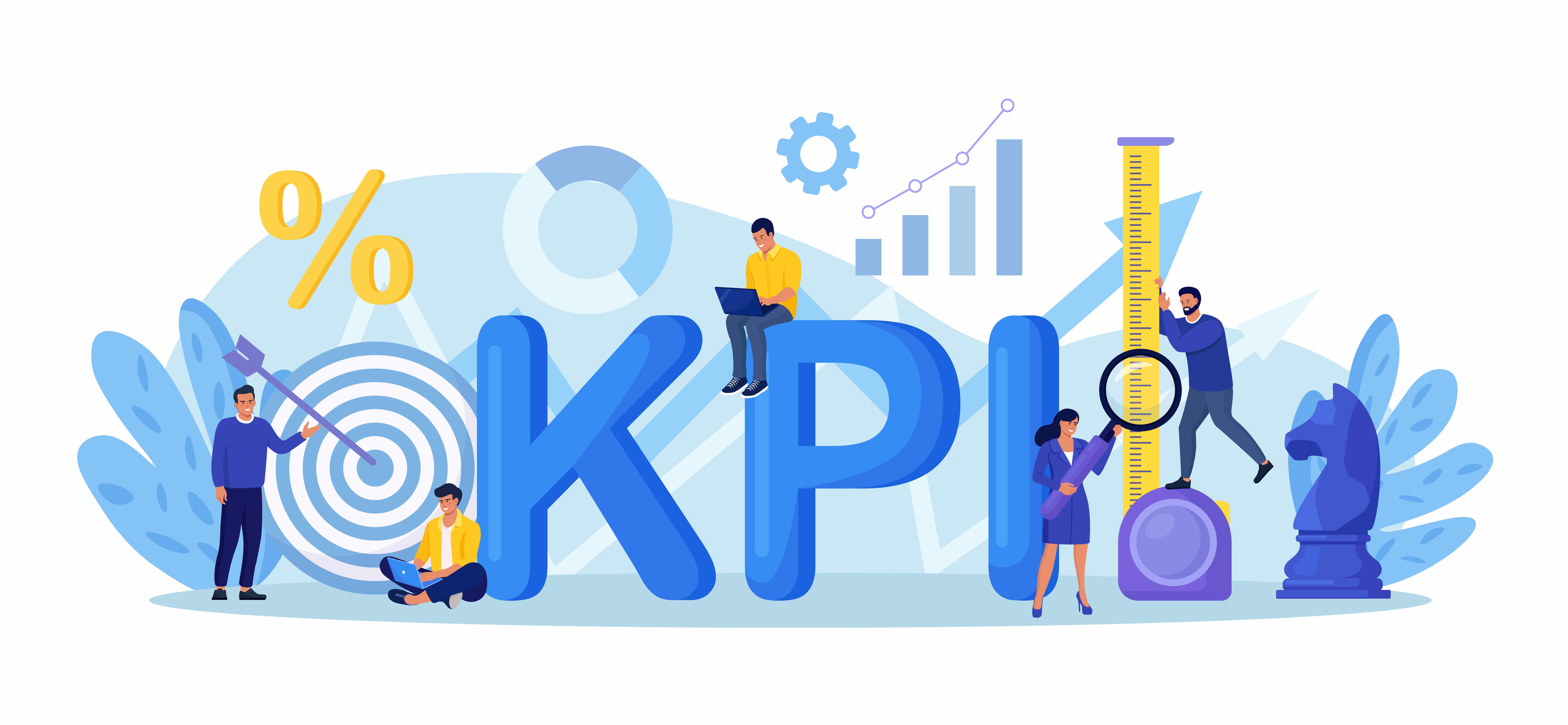KPIs for Performance and Compensation: Balancing Metrics and Incentives
Engineering teams perform at their best when they have clear goals, a sense of progress, and alignment with business objectives. But how do companies measure and reward engineering performance? Key Performance Indicators (KPIs) provide a structured way to track efficiency, code quality, and delivery effectiveness, ensuring that engineering teams stay aligned with business objectives and deliver consistent value.
Some organizations use KPIs as a tool for continuous improvement. Others take it a step further by tying them directly to performance reviews, bonuses, and compensation. When applied thoughtfully, this approach aligns engineering efforts with business goals and fosters growth. But when misused, it can add pressure, encourage gaming the system, or even harm team morale.
Let’s explore the most impactful KPIs for performance and compensation, their benefits and drawbacks, and how to use them effectively without negatively affecting engineering culture.
Why Use KPIs for Performance and Compensation?
When used effectively, KPIs provide a structured way to measure engineering impact, ensuring that teams are aligned with broader business goals. Companies rely on them to:
- Reward high-performing teams for meaningful contributions.
- Align engineering work with strategic objectives.
- Encourage continuous improvement by tracking trends over time.
- Increase transparency in performance evaluations, making expectations clearer.
However, not all KPIs are equally effective for individual compensation. Some metrics, like deployment frequency, work best at the team level because they promote collaboration rather than individual competition. If incentives are tied too tightly to individual KPIs, engineers may optimize for the metric rather than for meaningful contributions. To mitigate these risks, companies use a combination of team-based and individual KPIs. One approach is to establish tiered KPI targets, helping to set realistic performance expectations at different levels. Additionally, companies often balance individual and team-based KPIs, incorporate qualitative performance reviews, and reward impact over raw numbers.
As part of this balanced approach, many companies also establish tiered KPI targets to set clear expectations for different levels of performance:
- Met: The baseline acceptable performance level, ensuring core responsibilities are fulfilled.
- Target: The expected or optimal performance level that aligns with business and team goals.
- Stretched: Outstanding performance that goes beyond expectations, often linked to bonuses, promotions, or special recognition.
This structured approach helps teams understand how their contributions align with broader company goals while maintaining a balance between motivation and realistic performance expectations.
This clarity helps teams align their efforts with sustainable growth and continuous improvement. This approach helps maintain teamwork, innovation, and sustainable progress without creating unnecessary pressure.
Key KPIs for Performance and Compensation (with Tiers)
1. Lead Time for Changes
If you commit a piece of code today, how long before it reaches production? Lead Time for Changes measures exactly that. Faster lead times mean teams can iterate quickly, fix bugs efficiently, and ship improvements without long delays.
For teams working in highly dynamic environments, this KPI reflects how smoothly their development and deployment processes function. Google and Facebook have optimized their CI/CD pipelines to support frequent deployments—sometimes multiple times a day. In contrast, smaller companies or startups may adopt a more gradual approach, balancing speed with resource constraints by focusing on manual approvals or phased rollouts before full automation. They achieve this by implementing strong testing and monitoring systems that ensure stability.
Why it matters: Shorter lead times enable faster feedback loops, reduced bottlenecks, and a more responsive engineering team. A well-optimized lead time also accelerates time-to-market, allowing companies to adapt quickly to market demands and improve user experience.
Potential pitfalls: If teams focus too much on reducing lead time, they may start rushing deployments, leading to quality issues and increased failure rates. Beyond automated testing, teams can use phased rollouts and A/B testing to validate changes in production before full deployment. To balance speed with stability, teams should invest in automated testing, phased rollouts, and clear code review practices.
KPI Tiers:
- Met: ≤7 days
- Target: ≤3 days
- Stretched: ≤1 day
2. Deployment Frequency
Some teams push updates once a month, while others deploy multiple times a day. Deployment Frequency measures how frequently a team pushes code to production, reflecting its agility and iteration speed.
Frequent deployments allow teams to release features quickly while keeping changes manageable. Smaller updates are easier to validate and roll back if needed, reducing overall risk. Industry leaders such as Amazon and Netflix have adopted highly automated release processes and feature flagging, enabling them to deploy code at an exceptionally high frequency—sometimes thousands of times per day—while maintaining stability.
Why it matters: Higher deployment frequency improves agility, accelerates customer feedback, and reduces the risk per deployment. Smaller, more frequent releases make it easier to isolate and fix issues rather than dealing with large, complex changes.
Be careful of: Simply increasing deployment frequency without proper safeguards, like automated testing, can introduce instability into production. Teams should leverage feature flags, automated rollback systems, and progressive rollouts to maintain stability while deploying frequently.
KPI Tiers:
- Met: At least 1 deployment per week
- Target: At least 1 deployment per day
- Stretched: Multiple deployments per day
3. Change Failure Rate
Fast deployments are great, but not if they introduce more problems than they solve. Change Failure Rate tracks how often deployments lead to rollbacks or incidents.
A lower failure rate is a sign of solid engineering practices, including good testing, peer reviews, and automated validation. Companies that maintain failure rates below 5% achieve this by implementing robust testing suites, feature flagging, and canary deployments to catch issues before they impact all users.
Why it matters: Lower failure rates signal better code quality and fewer disruptions, leading to smoother deployments, improved user experience, and reduced operational firefighting.
Potential pitfalls: If engineers fear increasing the failure rate, they might become overly cautious, slowing down innovation. One approach is to categorize failures by severity, ensuring low-risk failures can be tolerated to allow faster iteration, while critical failures remain a priority for minimization. This balances stability with innovation while complementing automated testing and feature flagging strategies. Instead of avoiding risk entirely, teams should focus on automated testing, feature flagging, and incremental rollouts to maintain stability while encouraging rapid iteration.
KPI Tiers:
- Met: ≤15%
- Target: ≤5%
- Stretched: ≤1%
4. Mean Time to Restore (MTTR)
Incidents are inevitable, but how quickly can your team respond? MTTR measures the time it takes to restore service after a failure, reflecting the effectiveness of an engineering team’s incident response process.
A strong MTTR depends on fast issue detection, well-documented resolution playbooks, and automated rollback mechanisms. Companies like Microsoft and Google leverage automated rollback systems and rapid response protocols to minimize downtime. While some minor incidents can be resolved quickly, major outages often require deeper investigation and may take longer to fully resolve.
Why it matters: A short MTTR reduces downtime and ensures a better user experience, stronger service reliability, and compliance with SLAs. It also reflects how well a team balances speed with thorough incident resolution.
Potential pitfalls: Over-focusing on MTTR might lead teams to prioritize quick fixes over long-term stability. To maintain both speed and long-term stability, teams should schedule time for post-mortems and strategic fixes after restoring service. A balance between rapid response and thorough post-mortem analysis is crucial for sustainable improvements.
KPI Tiers:
- Met: ≤1 day
- Target: ≤4 hours
- Stretched: ≤1 hour
5. On-Time Delivery Rate
It’s not just about writing great code—it’s about delivering features when they’re needed. On-Time Delivery Rate tracks the percentage of work completed within planned timeframes.
Teams with high on-time delivery rates typically have well-defined roadmaps, predictable sprint velocities, and strong project management practices. However, rigid deadlines can sometimes lead to rushed work and burnout, which is why some companies use velocity tracking instead of strict due dates.
Why it matters: This KPI helps engineering teams assess how effectively they plan and execute work while balancing realistic deadlines. A strong on-time delivery rate also builds trust with stakeholders, ensures customer expectations are met, and prevents delays from cascading into other business functions.
Potential pitfalls: Strict deadlines can cause rushed work, technical debt, and team burnout. Instead, teams should track historical velocity, adjust priorities dynamically, and allow buffer time in planning to balance predictability with flexibility.
KPI Tiers:
- Met: 80% on time
- Target: 90% on time
- Stretched: 95% on time
Final Thoughts: KPIs – A Guide for Growth, Not Just Measurement
KPIs are most effective when they help teams identify areas for improvement rather than being used as rigid performance metrics. They should encourage better collaboration, higher quality, and sustainable engineering practices rather than pressure teams into chasing numbers.
Key Takeaways:
- Use KPIs to drive conversations, not to micromanage individuals.
- Balance data with qualitative insights like peer feedback and leadership contributions.
- Foster a culture of learning, ensuring that KPIs support innovation rather than hinder it.
- Aim for sustainable engineering excellence, not just numerical targets.
When used thoughtfully, KPIs enhance performance, strengthen reliability, and build a culture of trust focused on long-term success. However, their effectiveness depends on tailoring them to each company’s unique needs, culture, and growth stage.



